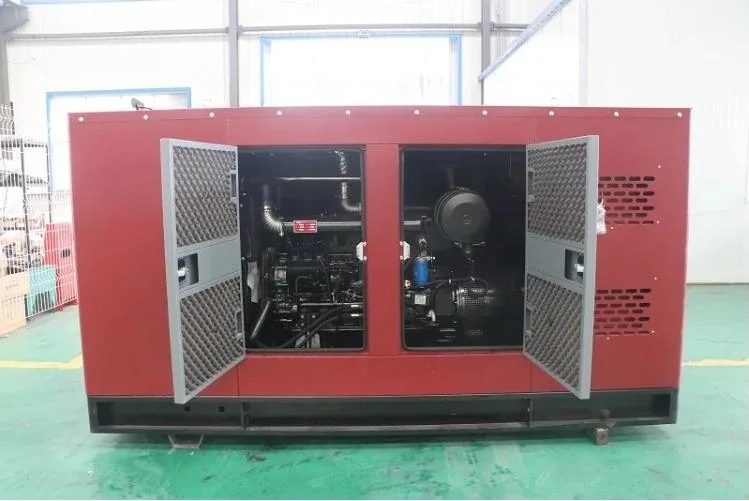Introduction
Diesel generators have long been a reliable and efficient source of power for a wide range of applications, from backup power in critical facilities to primary power in remote locations. However, the environmental impact of diesel generators has come under scrutiny due to their emissions of pollutants such as nitrogen oxides (NOx), particulate matter (PM), and carbon monoxide (CO). In response to growing concerns about air quality and public health, governments around the world have implemented stringent emissions standards to regulate the emissions from diesel generators. This article will explore the importance of emissions standards for diesel generators, the technologies available to reduce emissions, and the implications for the industry and the environment.
Importance of Emissions Standards for Diesel Generators
Emissions from diesel generators are a significant source of air pollution, contributing to smog, acid rain, and health problems such as respiratory diseases and cardiovascular issues. In addition to the immediate health impacts, diesel emissions also have long-term effects on the environment, contributing to climate change and ecosystem damage. Emissions standards for diesel generators are therefore essential to protect public health and the environment by limiting the amount of pollutants that can be released into the air.
Emissions standards for diesel generators typically set limits on the amount of NOx, PM, and CO that can be emitted per unit of power generated. These standards are enforced through regulations that require manufacturers to design engines that meet the specified emissions limits and require operators to use technologies such as exhaust gas aftertreatment systems to reduce emissions. By setting clear and enforceable limits on emissions, governments can ensure that diesel generators operate in a cleaner and more sustainable manner.
Technologies to Reduce Emissions from Diesel Generators
A variety of technologies are available to reduce emissions from diesel generators and help them meet emissions standards. These technologies can be divided into two main categories: engine design improvements and exhaust aftertreatment systems.
Engine design improvements focus on optimizing the combustion process to reduce the formation of pollutants such as NOx and PM. Common engine design improvements include high-pressure fuel injection systems, variable geometry turbochargers, and exhaust gas recirculation systems. These technologies can help diesel engines operate more efficiently and produce fewer emissions without compromising performance or reliability.

https://www.lkpowerplant.com/product/quick-delivery-emergency-standby-power-400kw-silent-type-diesel-generator-set-for-peru/ are devices that are installed in the exhaust system of diesel generators to further reduce emissions. The most common type of exhaust aftertreatment system for diesel generators is selective catalytic reduction (SCR), which uses a catalyst to convert NOx into nitrogen and water vapor. Diesel particulate filters (DPF) are another commonly used aftertreatment technology that captures and removes PM from the exhaust stream. By combining engine design improvements with exhaust aftertreatment systems, diesel generators can significantly reduce their emissions and comply with emissions standards.
Implications for the Industry and the Environment
The implementation of emissions standards for diesel generators has significant implications for both the industry and the environment. For manufacturers, meeting emissions standards requires investment in research and development to develop new technologies and redesign existing engines. This can lead to higher production costs and potentially higher prices for consumers. However, complying with emissions standards also presents an opportunity for manufacturers to differentiate themselves in the market by offering cleaner and more sustainable products.
For operators of diesel generators, complying with emissions standards may require investment in retrofitting existing equipment with emissions control technologies or purchasing new, compliant generators. While this may initially entail a higher upfront cost, the long-term benefits of reduced emissions and improved air quality can outweigh the initial investment. In addition, many governments offer incentives and subsidies to encourage the adoption of cleaner technologies, making compliance with emissions standards more financially feasible.
From an environmental perspective, emissions standards for diesel generators play a crucial role in reducing air pollution and mitigating climate change. By limiting the amount of pollutants that can be emitted, emissions standards help to improve air quality and protect public health. In addition, reducing emissions from diesel generators can help to decrease the sector's contribution to greenhouse gas emissions and support global efforts to combat climate change.
Conclusion
Emissions standards for diesel generators are a vital tool for protecting public health and the environment by limiting the amount of pollutants that can be emitted into the air. By setting clear and enforceable limits on emissions, governments can ensure that diesel generators operate in a cleaner and more sustainable manner. The implementation of emissions standards has led to the development of innovative technologies to reduce emissions from diesel generators, such as engine design improvements and exhaust aftertreatment systems. While compliance with emissions standards may entail initial costs for manufacturers and operators, the long-term benefits of reduced emissions and improved air quality outweigh the investment. Overall, emissions standards for diesel generators are essential for ensuring cleaner air and a sustainable future for generations to come.
